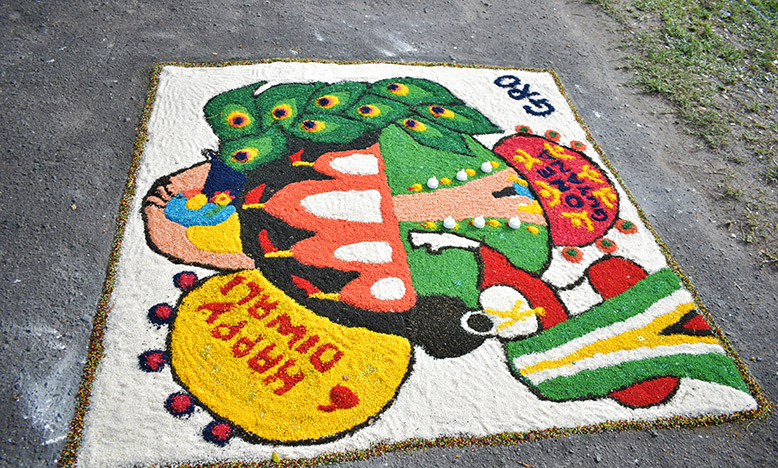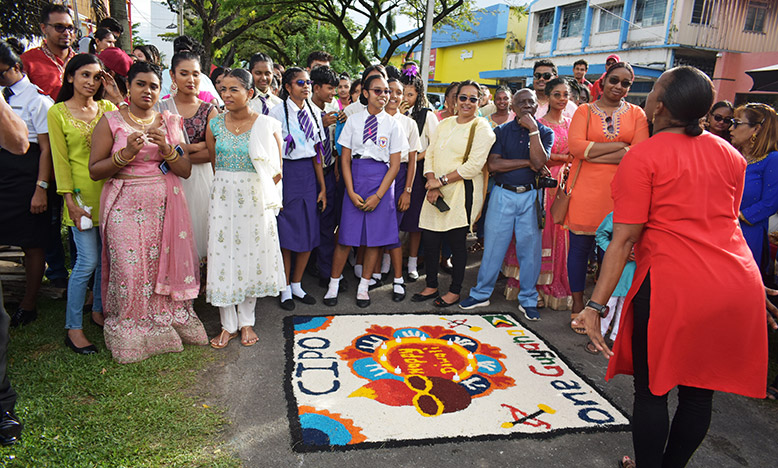Rangolis in Georgetown
RANGOLI, one of the most beautiful and pleasing art forms of India, is comprised of two words, ‘rang’, meaning ‘colour’, and ‘aavalli’, meaning coloured ‘creepers’ or ‘row of colours’. Rangoli is, basically, the art of making designs or patterns on the walls or floor of the house, using finely ground white powder, along with different colours.
Rangoli has always been a part of Indian culture. It is believed that making rangoli on an auspicious day brings prosperity, and good luck in the family. Rangoli is prepared from different items, such as flour, rice, flowers and colours. People make different patterns and designs at the front of their door and other places inside the house.

According to Indian culture, making rangoli on important occasions like Diwali is believed to be auspicious. Rangoli signifies welcoming Goddess Lakshmi on Diwali. It is believed that making rangoli at the entrance of the house welcomes positive energy, and wards off negative energy. (Times of India)



.jpg)














